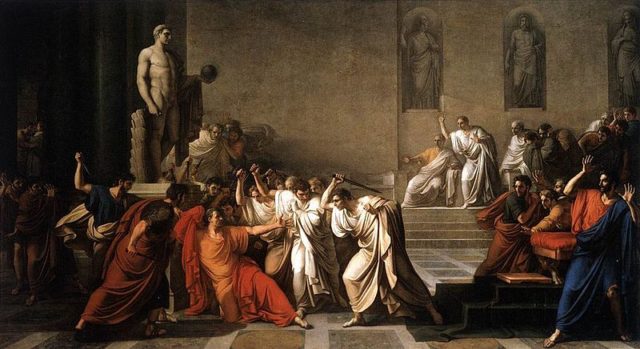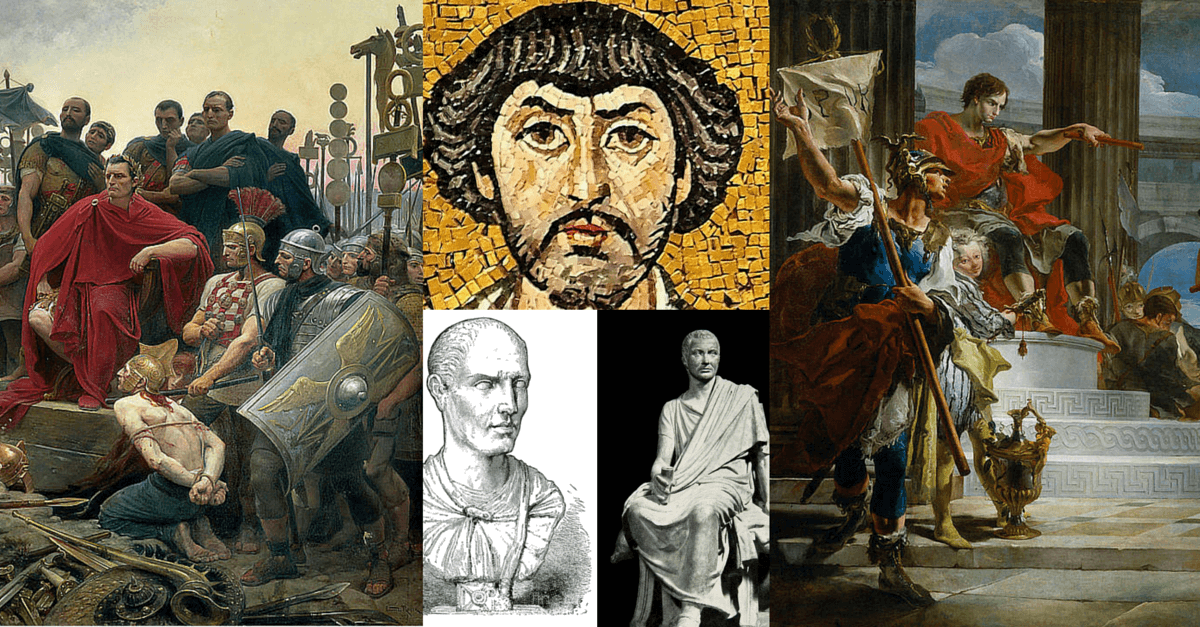The Roman Legion was a fearsome military unit. A heavy infantry advance was almost unstoppable, able to take on most enemies. The best aspect of the legions was their adaptability, which worked best with confident officers led by talented generals.
With these amazing leaders, Roman legions were routinely able to take on advanced foes with numbers far larger and still emerge victorious. We’ve made this list of our favorite five great Roman Generals.
5. Marcus Claudius Marcellus
Marcellus is probably best known as the General who took down Syracuse despite Archimedes’ best efforts. That siege doesn’t put him on this list, as it was long and difficult, nor does his death, being surprised and killed in an ambush. What really put him on this list was Marcellus’ ferocity and daring in the face of the most talented general Rome would ever face, Hannibal.
Before Hannibal, Marcellus gained fame by claiming the Spolia Opima, that is, the honor of killing an enemy king in single combat and taking his armor as a prize. He was an acclaimed war hero before Hannibal even invaded.
Undeterred by Hannibal’s three crushing victories, Marcellus aggressively defended the strategic city of Nola three times in three years. Each time Hannibal launched a large-scale attack, and each time he was repulsed.
Following this and a string of successful minor battles, Marcellus would organize and oversee the massive Siege of Syracuse. Here Marcellus faced the genius of Archimedes, as giant cranes pulled whole ships out of the water and massive catapults struck down even more ships. Eventually, however, Marcellus succeeded in storming the well-fortified city, turning the tides of war in Rome’s favor.
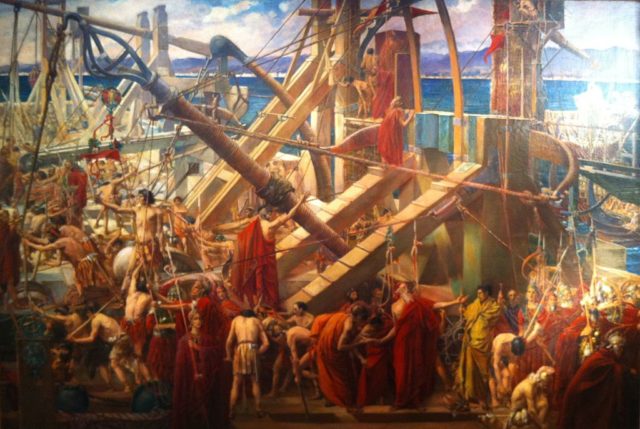
4. Lucius Licinius Lucullus
Lucullus had much more than an awesomely alliterative name – he also fought a war with almost no support from Rome against two distant kings. One of these kings was Mithridates VI, the famous poisoner King of Pontus.
Lucullus started his career under Sulla and commanded a successful naval attack at Tenedos. Here Lucullus chased down a Pontic navy carrying three prominent generals. After they landed on an island he launched a two-pronged amphibious assault and captured the generals.
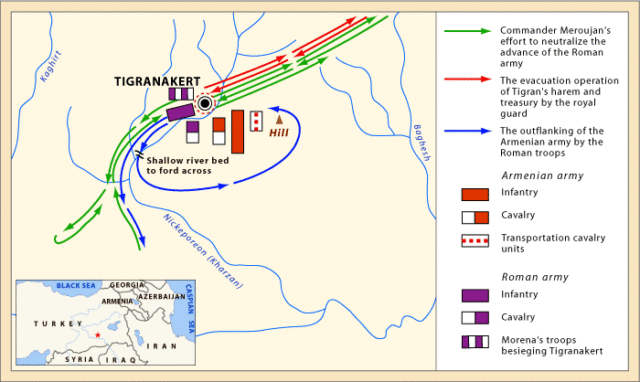
Later Lucullus faced Poison arrows and napalm-like Naphtha bombs from the armies of Pontus and Armenia. Despite facing largely professional Hellenized armies, armed with poison and firebombs, Lucullus brought his army through the harsh Armenian terrain without a loss.
He inflicted defeat after defeat and took several towns by assault, even though one town resorted to throwing beehives into the Roman sapping tunnels. His rapid movement was like an ancient Blitzkrieg and his tactics were studied for generations; Lucullus was praised by some historians as the best tactician since Alexander, but many of the details of his battles are lost.
3. Flavius Belisarius
The so-called “last of the Romans” Belisarius was an amazing campaigner and tactician. The Byzantines were still fully considered to be Romans, especially this early in their history. He got his start under the reign of Justinian and fought to regain much of the Western Roman Empire.
Before fighting Byzantium’s enemies abroad, he fought them at the infamous Nika Riots, putting down a rebellion that threatened to collapse the capital.
The fight started as the Byzantines capitalized on rebellions in Vandal-controlled Africa. Belisarius invaded quickly and was almost completely surrounded by Vandal armies. Refusing to fall into the trap, Belisarius broke out and demolished the Vandals in a series of smaller engagements.
After capturing Carthage, Belisarius faced a Vandal army three times his size and routed them with ease, killing the King’s brother in the process.
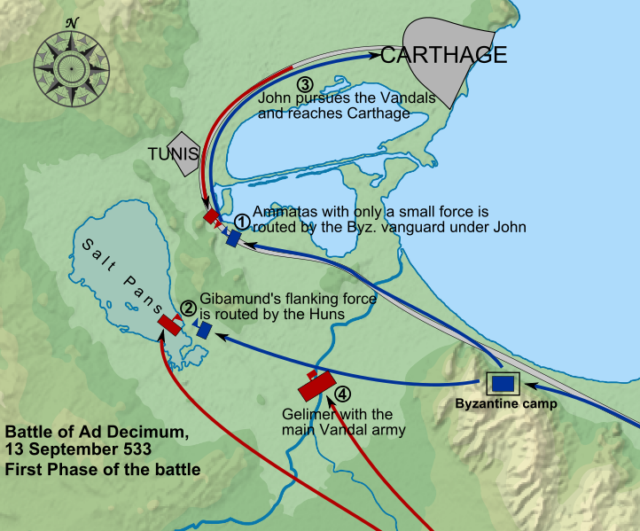
With the North African territories regained, Belisarius set his sights on Italy. Easily running through Sicily, Belisarius retook many Italian cities. This was made easier as many towns welcomed Belisarius as a liberator. After entering Rome, Belisarius successfully fended off a Gothic siege while heavily outnumbered.
He was soon recalled east, far east, where he reconquered the province of Syria just taken by the Persians. While unable to sack the largest towns, Belisarius won several great victories and captured forts and smaller towns to regain Roman power in the area.
Belisarius eventually returned to Italy but was given very little resources and his fame and plot to overthrow the Pope got him recalled and temporarily imprisoned. He was eventually pardoned and restored to a glorious retirement.
His retirement was cut short when the Empire faced a Bulgarian invasion across the Danube. Belisarius easily defeated the vastly larger army and made the invasion into little more than a footnote.
2. Publius Cornelius Scipio Africanus
A very close competition for first, Scipio Africanus barely missed out on the top spot. Scipio started the Second Punic War too young to command but was present at most or all of Hannibal’s early victories.
After learning from the best, Scipio would serve with honor in the reconquest of Capua, the Italian city that rivaled Rome. He finally got his own command to drive the Carthaginians out of Spain, something his father and uncle died attempting to do.
In Spain, Scipio quickly stormed down the coast and took the most important Carthaginian city in Spain, New Carthage. he did this by sending men across a shallow lagoon after a local fisherman told him exactly when it became shallow enough to walk across.
Later on in Spain, Scipio faced three separate Carthaginian armies and Scipio’s only reinforcements were untrusty Spanish mercenaries of the same type who betrayed his father and uncle. Despite the grim outlook, Scipio defeated one army too quickly for the other two to join in. At Baecula, Scipio’s highly trained and efficiently organized forces successfully attacked uphill against an entrenched enemy. Small unit tactics led to multiple pincer moves and the hill was taken with ease.
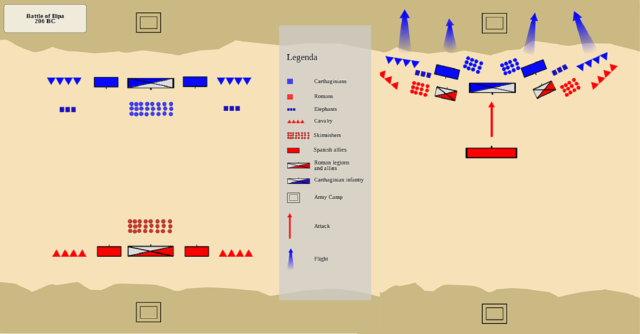
At Ilipa, Scipio withheld his untrusted center of Spanish mercenaries after switching his legions to his flanks. The deviation of standard formations with heavy infantry in the center allowed Scipio’s legions to smash the weaker wings of Hasdrubal’s army while Hasdrubal’s elite center couldn’t risk charging at Scipio’s withheld mercenary center. The victory incorporated tactics as complex as any of Hannibal’s victories.
Speaking of Hannibal, Scipio decisively defeated the legendary commander at the Battle of Zama. Scipio had a modest army and cavalry advantage, but Hannibal had veterans of his entire Italian campaign and up to eighty war elephants. Scipio handled the masses of elephants perfectly while engaging in a tactical chess match with Hannibal. The battle was closely contested until Scipio finally prevailed.
As the last show of his skills, Scipio accompanied his younger brother and likely heavily advised him during the battle of Magnesia. Here the Scipio brothers faced a disciplined Hellenic army that likely outnumbered the Romans and won a crushing victory. Scipio never lost a battle, was almost always outnumbered and faced one of the best generals of the ancient world beside Alexander.
1. Gaius Julius Caesar
It really is hard to argue against Caesar for being the best general Rome ever fielded. In one of his first large battles he faced the entire tribe of the Helvetii at Bibricate. He was outnumbered two to one, and while his victory was tough, it was never in doubt.
Caesar not only decimated all armies in his way, he also invaded Britain and crossed the Rhine, essentially just so he could say he did. These had no lasting strategic significance, but the battles and planning involved spoke volumes about Caesar’s tactical ability.
Caesar’s capture of Alesia was also amazing. Facing massive forces on both sides of the siege lines, Caesar was able to command his severely stretched lines and repulse the relief force. Caesar’s Gallic Wars would have been impressive enough on their own to land him somewhere on this list, but his other battles were all the more impressive as well.
At the Battle of Pharsalus Caesar perhaps perfectly captured the essence of the saying “less is more” by creating a small infantry force on a fourth line. This force was able to turn the tide of the heated cavalry battle before turning into the flank of Pompey’s vastly larger force. Caesar’s starving, recently defeated troops absolutely devastated the overconfident Optimates and Pompeian forces.
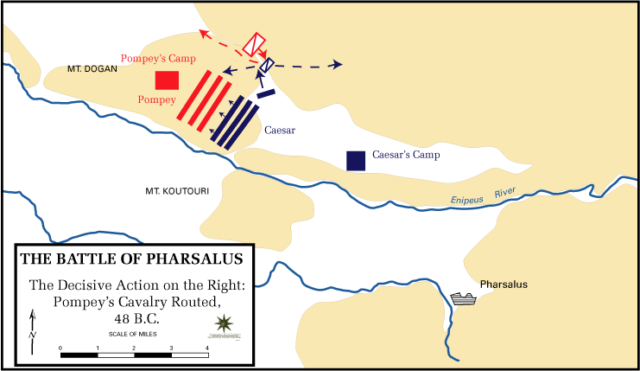
Caesar would exhibit fantastic control over his army, holding their loyalty far longer than they should have been expected to serve. With one word he stopped a mutiny calling his men citizens rather than soldiers in his speech to them. Taking these troops to Africa, Caesar faced the 60 elephants of Juba of Numidia. In the Battle of Thapsus, Caesar dealt with the elephants and decisively defeated the massive army of the Optimates.
Caesar’s last great battle at Munda was not such a decisive victory, but again showed Caesar’s ability and resolve to win. As the battle raged with nothing more to be done, Caesar, now in his 50s, personally charged into the fray and fought until a slim victory was achieved.
Caesar did not plan to remain in Rome long, and his assassination came just before Caesar was to depart on a campaign against the Parthian Empire.
